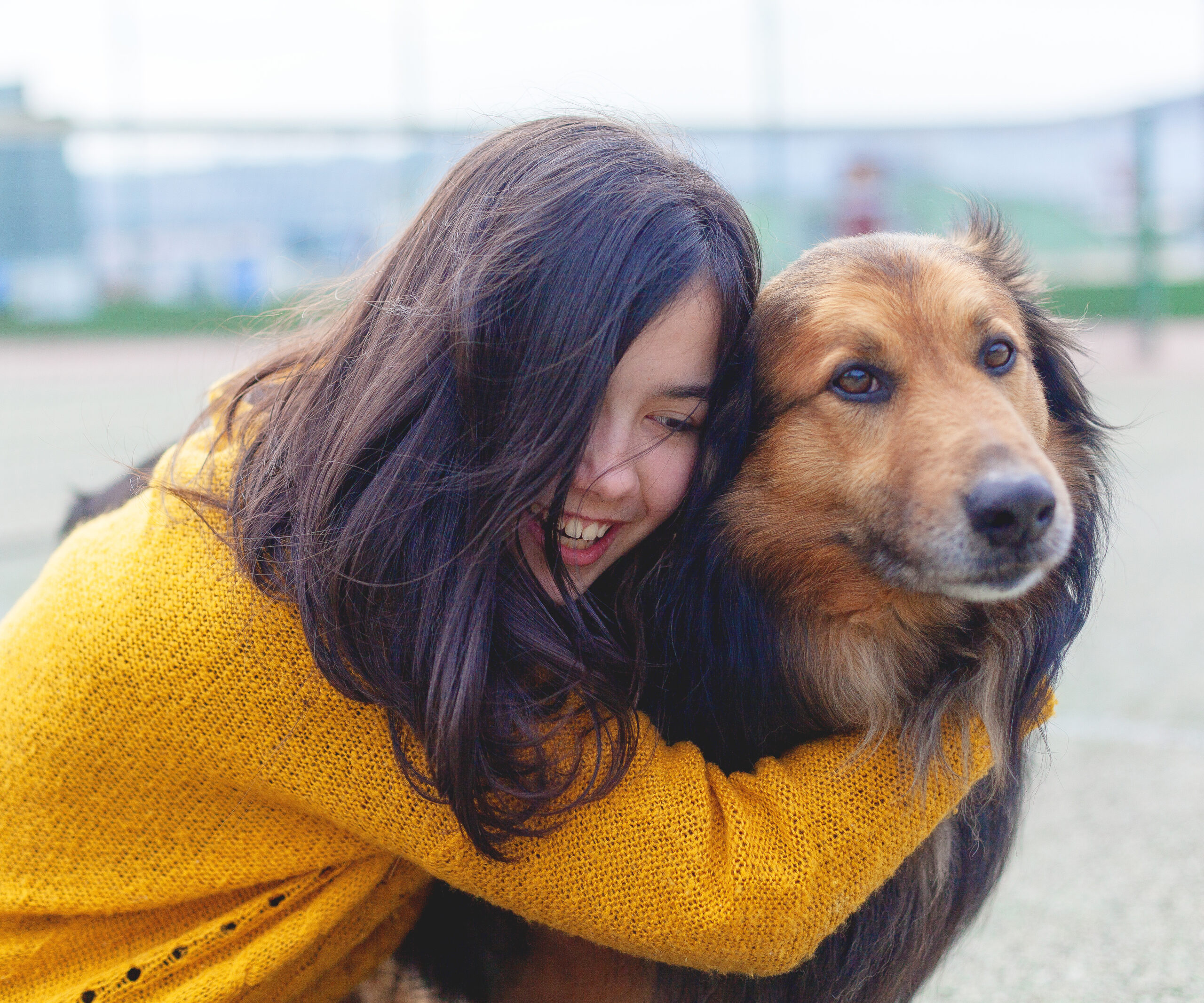Dogs can be much-loved members of the family, and having a dog brings so much joy and richness to a childhood. My kids certainly loved growing up with our canine family members.
But at the same time, it’s important we give our children some knowledge about dogs so they can enjoy family pets, as well as know how to treat dogs properly and keep themselves safe.
Here’s what your child needs to know about dogs:

How to meet new dogs
It’s sometimes hard to tell if a dog is friendly or not, so if you come across a dog that’s on its own it’s best not to pat it. If a dog is with its owner, ask if you can pat the dog first.
With the dog owner’s okay, tell your child to hold out the back of their hand for the dog to sniff – dogs are happier if they can approach us. Don’t rush up to a dog and never stand over them. Then pat the dog – under the chin or on the chest are the best spots, as this isn’t intimidating for the dog.
2. When to leave dogs alone
There are certain times when dogs should be left alone – when they are eating, chewing a toy, sleeping, showing signs of stress or if they are in their car or on their own property. Dogs that are startled unexpectedly can lash out, especially if you are in or near their territory, or the dog is tied up.
3. What your behaviour is saying to your dog
As humans, we love to look each other in the eye, hug tightly and (at times) scream, shout and play loudly. But to a dog, these behaviours can be threatening.
Don’t look a dog straight in the eye, rush towards them, startle them with screaming or shouting (even if it’s playful) or hug them. Instead, let the dog approach you and pat him under the chin or on the chest area, if they are showing friendly signs.

4. What to do if an aggressive dog approaches
If you meet a dog that seems aggressive, don’t look the dog in the eye and never run away. Instead, be very calm and still. Stand with your arms by your sides, turn your body side on and don’t look the dog directly in the eye.
If someone is nearby, gently call for help in a very calm tone of voice, and if you can, slowly start to back away from the dog until you are somewhere safe like in a house or car.
5. How to care for a dog
Dogs have feelings and need looking after. Every day they need good food, fresh water, a warm bed and a sheltered place to sleep. They also need playtime, exercise and, most importantly, heaps of love and attention.
Sometimes they might also need a bath or a brush. Kids can help parents look after the family dog – when you love and care for your dog, it will love you back forever.
6. Different dogs like different things – just like us
If you have a dog that loves everything you do, that’s great. Many family pets that have grown up with kids don’t mind loud and unexpected noises, being climbed on, chased, played with, dressed up, hugged tightly – or anything else that kids might do.
But remember not all dogs are the same, and just because your dog likes hugs and playing, it doesn’t mean that every other dog does too. Always ask a dog’s owner what it does and doesn’t like, and how to treat it. Remember, most dogs don’t like being hugged, climbed on, having their collar pulled or shouting and screaming.

7. How to tell how a dog is feeling
When dogs are feeling stressed, they might pant, shake, have their tail tucked between their legs, lower their body or turn away from you, or they might whine.
A dog that is on the verge of being aggressive might stiffen up, stare at you, growl or bark, stand tall, have its ears standing up straight on its head, have its tail high, and its hackles might stand up (these are the hairs along the back of a dog’s neck and back, which can stand up on end if the dog is feeling aggressive or frightened).
If you see any of these warning signs, stay quiet and remove yourself from the dog’s area calmly and quickly. Kids should let an adult know.
8. What you shouldn’t feed a dog
Most dogs love food, and many dogs also like human food – but that doesn’t mean it’s good for them.
There are some foods you shouldn’t feed dogs – even if they are acting like they want some. Don’t feed your dog apple cores, avocado, lollies, chocolate, grapes, raisins, nuts, onions, peaches, plums or anything too salty or sugary.
Human foods that dogs can have are raw bones, cheese, eggs, peanut butter, cooked chicken and rice. But always ask the dog’s owner before feeding a dog anything, as you don’t want to make a dog sick.
9. That dogs love us
Dogs love us just as much as we love them, and most dogs are good and well-socialised. There’s no need to be scared of dogs – just have some knowledge about their behaviour, and remember to treat them with love, care and respect.
That way, a dog can be your best friend – and you’ll never have a friend that loves and cares about you more. They’re great at keeping secrets too!

Mark Vette is an animal behaviourist, dog trainer and author of Dog Zen. To find out more about Mark and what he does, go to dogzen.com
-scaled.jpg)

